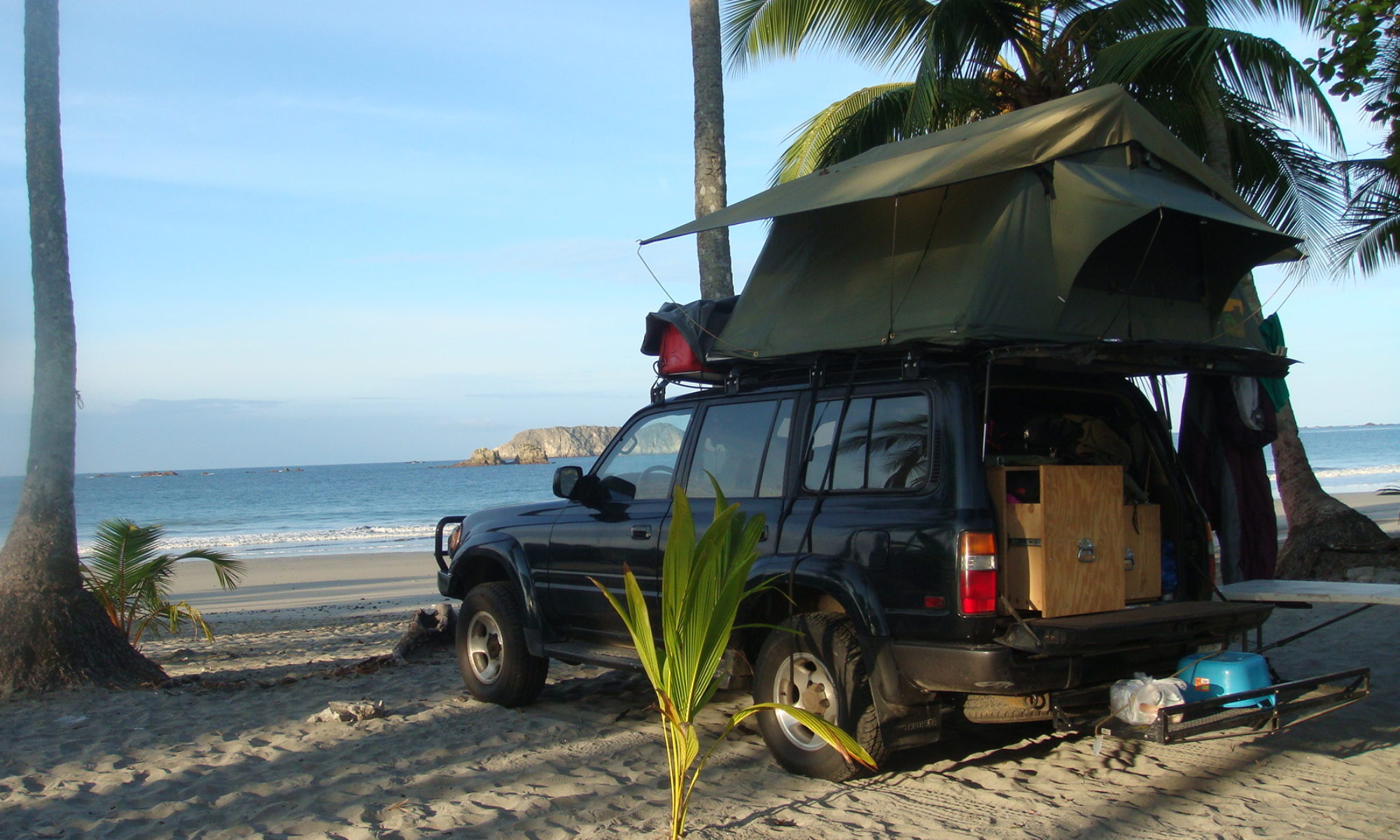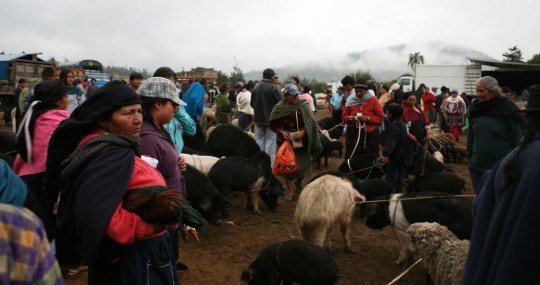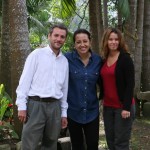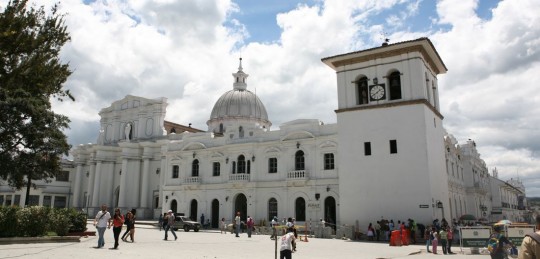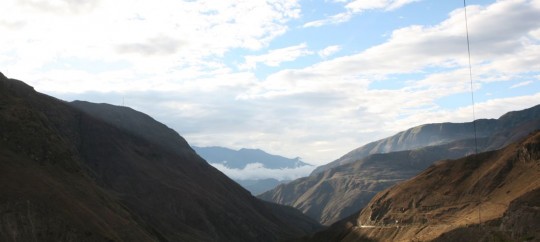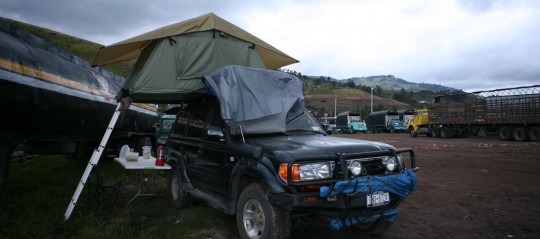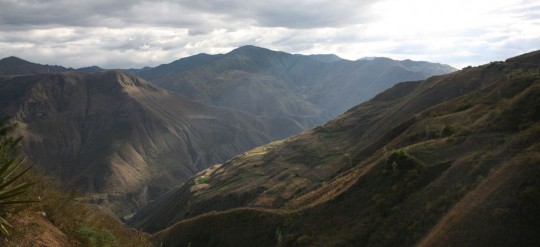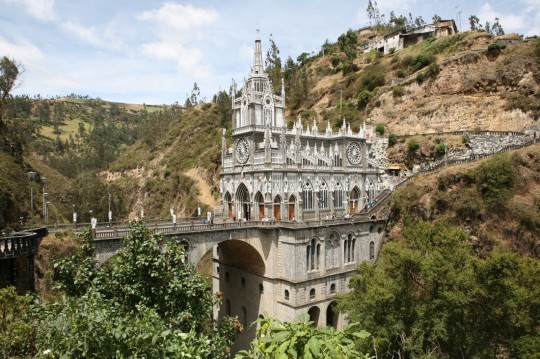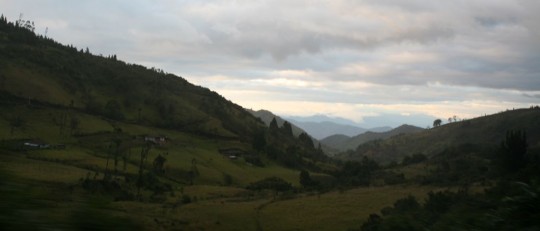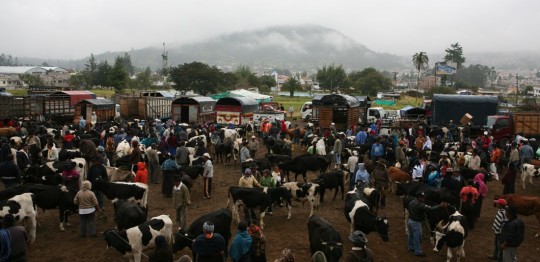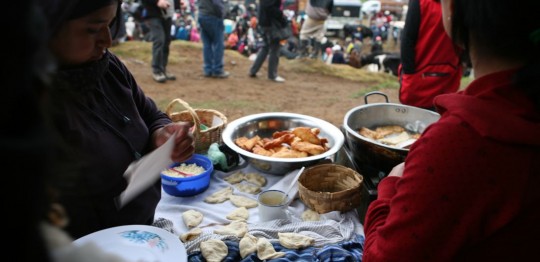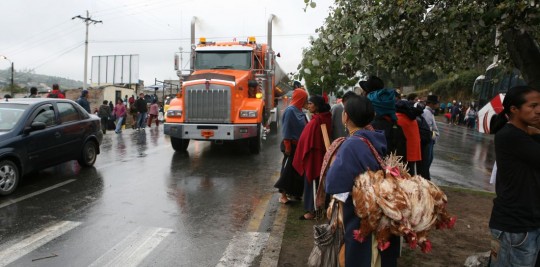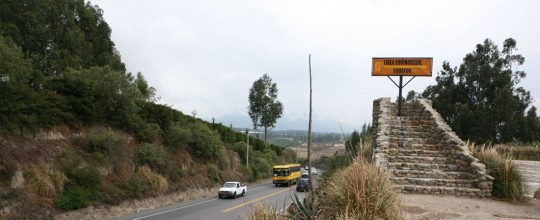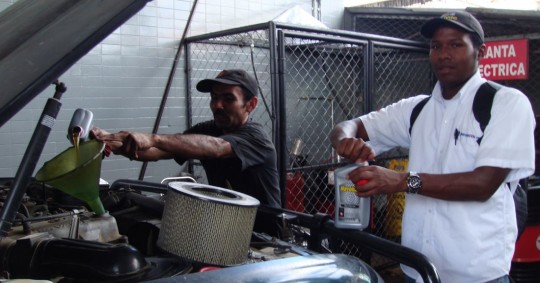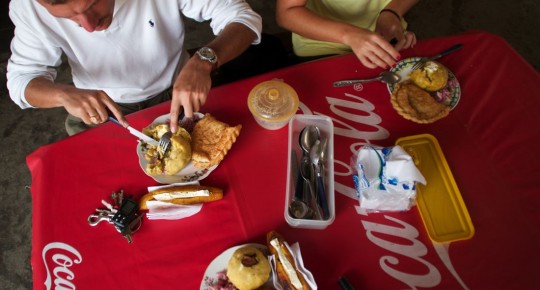
Again I have to apologies for this delayed update. In the meantime, I was able to cross Ecuador and reach Peru. The truth is I had the same trouble than in Colombia. I was not being able to connect to my server from Zorritos, the town in northern Peru we arrived at. There may be some websites hosted on my server that doesn’t fit some governments, which would be the reason for its inaccessibility in some countries that censor the internet access.
But let’s start from the beginning. We picked up my friend Dan at Quito’s international airport at 1:30 on a rainy day. He flew from New York City with a stop-over in San Jose, Costa Rica. Dan works at the United Nations in NY, and was able to take three weeks off that he intends to spend with us. It is nice to have someone additional to help with taking photos, so I can just walk the streets of old cities without carrying my camera and worrying about taking good shots.
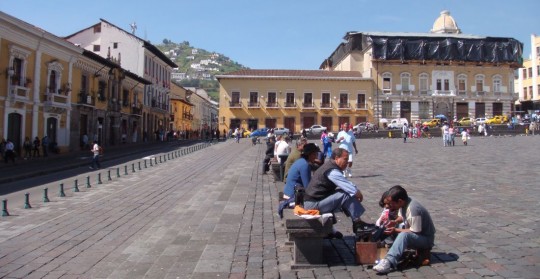
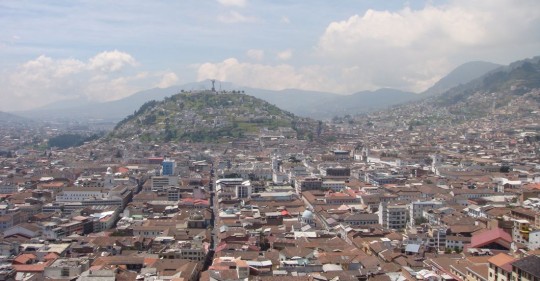
After picking up Dan at the airport, we drove to the historic center of the city, and quickly found a cheap hotel (Hotel Grand, US$7 per person, recommended, inside parking).
Despite the rain, we went out for some drinks and Ecuadorian food (great ceviche) in the northern and more modern part of town. There were a lot of people there, in bars and dancing, and it looked like Quito is a lively metropolis, something that I would not have imagined.
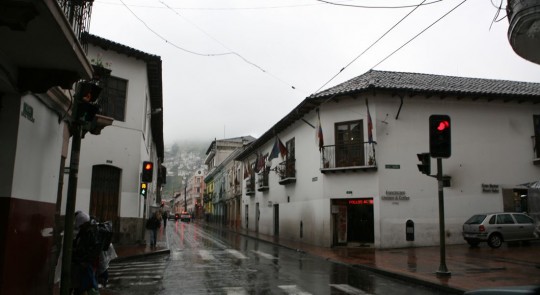
At night, the old city seemed dead, and somehow not very welcoming. On the Sunday morning, it was the inverse. Probably the best capital city we visited since the beginning of the trip. We took a two-hour stroll around, and were able to see the inside of churches, a difficult thing in Latin America, as those are often closed when there’s no mass. Also the traffic is reduced in the old streets, so you can have a pleasant walk. There are no modern buildings there, making Quito old quarter a well-preserved historic gem.
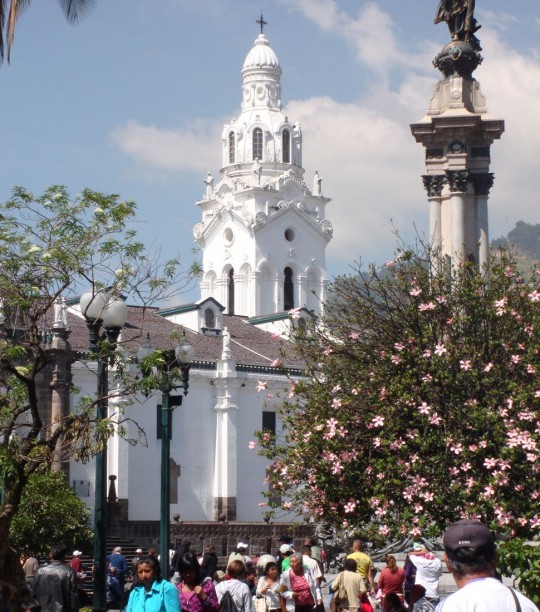
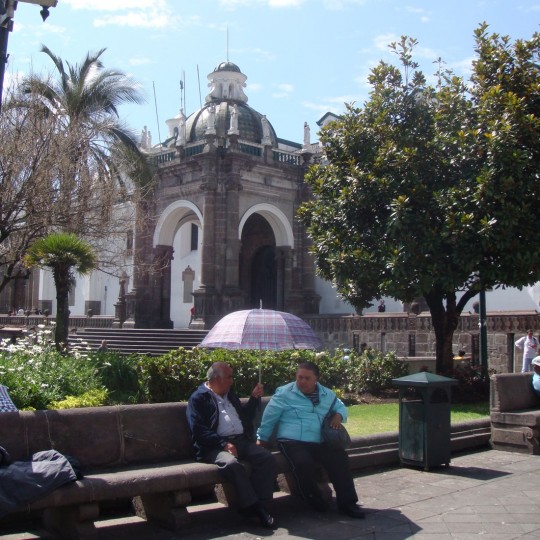
We had good coffee, bought croissants in a panaderia, and had excellent time walking all the way to the northern part of town – Mariscal – to have lunch. I wish the pictures of the city would show better how Quito is, but I would recommend anyone to spend few days here, to enjoy the city and its delicious food. The Lonely Planet walking tour of the old city is recommended. Eventually, we came back using the electric trolley system, and were leaving the city around 4 p.m.
Our next destination was Banos, a small town of 20,000 inhabitants at the foot of Volcan Tungurahua. It took us more time that we thought to get there, and it was pitch black when we arrived, after a very difficult drive in the night and rain. We camped on the soccer field of the city this night, after cooking pastas.
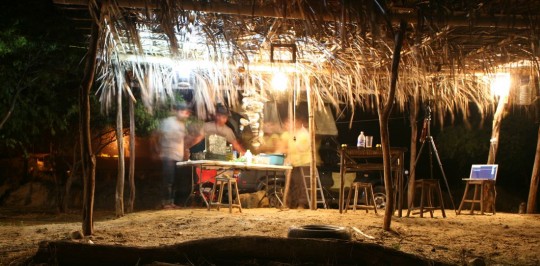
In the morning, we drove through the city to reach the municipal baths, where one can take advantage of the mineral-loaded water in concrete pools of various temperatures. We stayed until noon, roasting in the hot water. Then, we were back in the mountains, this time to reach Guayaquil, the economic capital of the country.
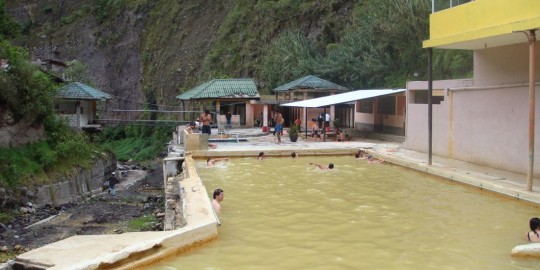
The drive was pretty interesting. We were high again, at 4,000 feet. People in the mountains – especially women – wear the traditional attires, which is something similar to Bolivia. When we began to go down, an opaque fog stayed around us for few hours, sometimes so thick I could not see few yards in front of the truck. That, combined with a sometimes poor road surface, did slow us down, and we arrived to Guayaquil at the beginning of the evening.
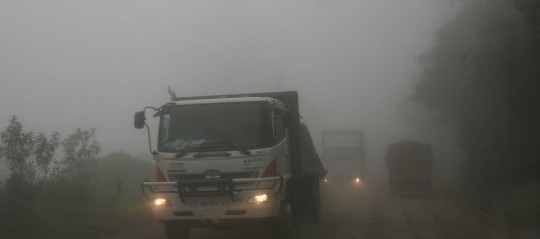
There, we were invited by Oswaldo, the owner of the Regina hotel (http://www.hotelreginaguayaquil.com/) to spend a night (thanks Paul, my friend). We slept like rocks in the quiet hotel, after getting quick diner and drinks in the center of the city. There is not much to see in the big town, as the place is mostly a step for travelers to reach the Galapagos Islands, which we will not visit on this trip, unfortunately.
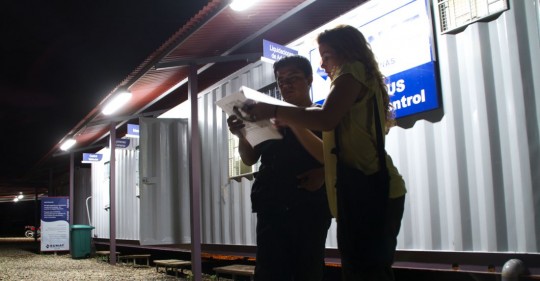
After that, and saddened by the rainy weather, we decided to push as far south as we could, possibly passing the Peruvian border, which we knew was open 24 hours. Exiting the big city was a nightmare, and it took us almost two hours after getting lost. Most of the day, there were banana farms on both sides of the road. Before the border, we made sure to fill up all the jerry cans and the tank of the truck, since gas is way more expensive in Peru. You can’t beat Ecuadorian prices, at around $2 a gallon.
Of course, customs officials were not so happy when they saw our gasoline reserves, but they waved us through anyway with it, after saying first we could not take the precious load with us. This is the first border crossing we take at night, and we were the only people on the Peruvian side, which made the formalities faster than ever. No fees to cross the line, import the vehicle, and get a temporary driver license.
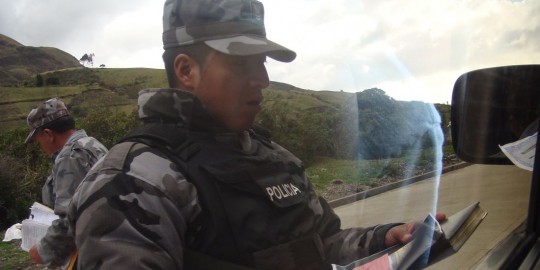
In the darkness, we found a camping on the beach, few miles south of Zorritos, and were happy to open the tent there, after a long day of driving. In the morning, as the sun came up, we discovered a really nice beach, and agreed we should stay until the day after to relax, and enjoy the sun. In addition, I had some overdue work on the truck to do, and I intended to take care of it there.
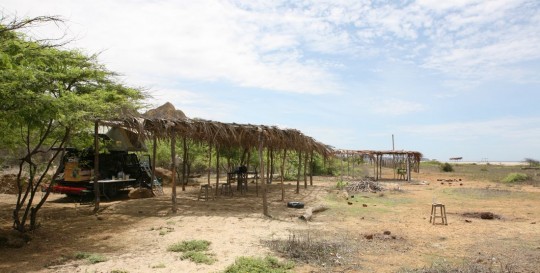
The camping we were at, Three Puntas, was great, and was no more than US$3 per person and per day. A leak in the gasoline stove forced us make a fire on the beach the second night, and use it to cook. One more thing I would have to fix.
I calculated that since we left, we drove an average of 95-miles a day. At such speed, you have to manage yourself some stops when you find a good place. Being constantly on the move may become stressful after a while, especially when you add up the lack of comfort synonym with camping.
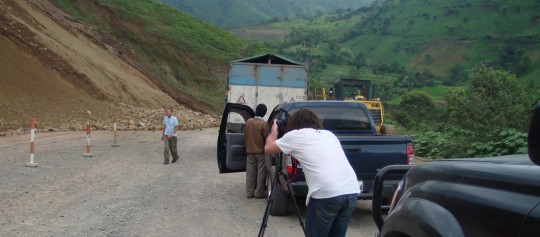
Anyhow dear readers, we are back on our way south, and we know we will have to face some difficult weather while we cross Peru, as there are some episodes of strong rain and we suspect landslides may have caused road closing between here and Trujillo. I hear the Machu Pichu, victim of flooding, is still closed for at least three weeks, so I guess we will miss that.
